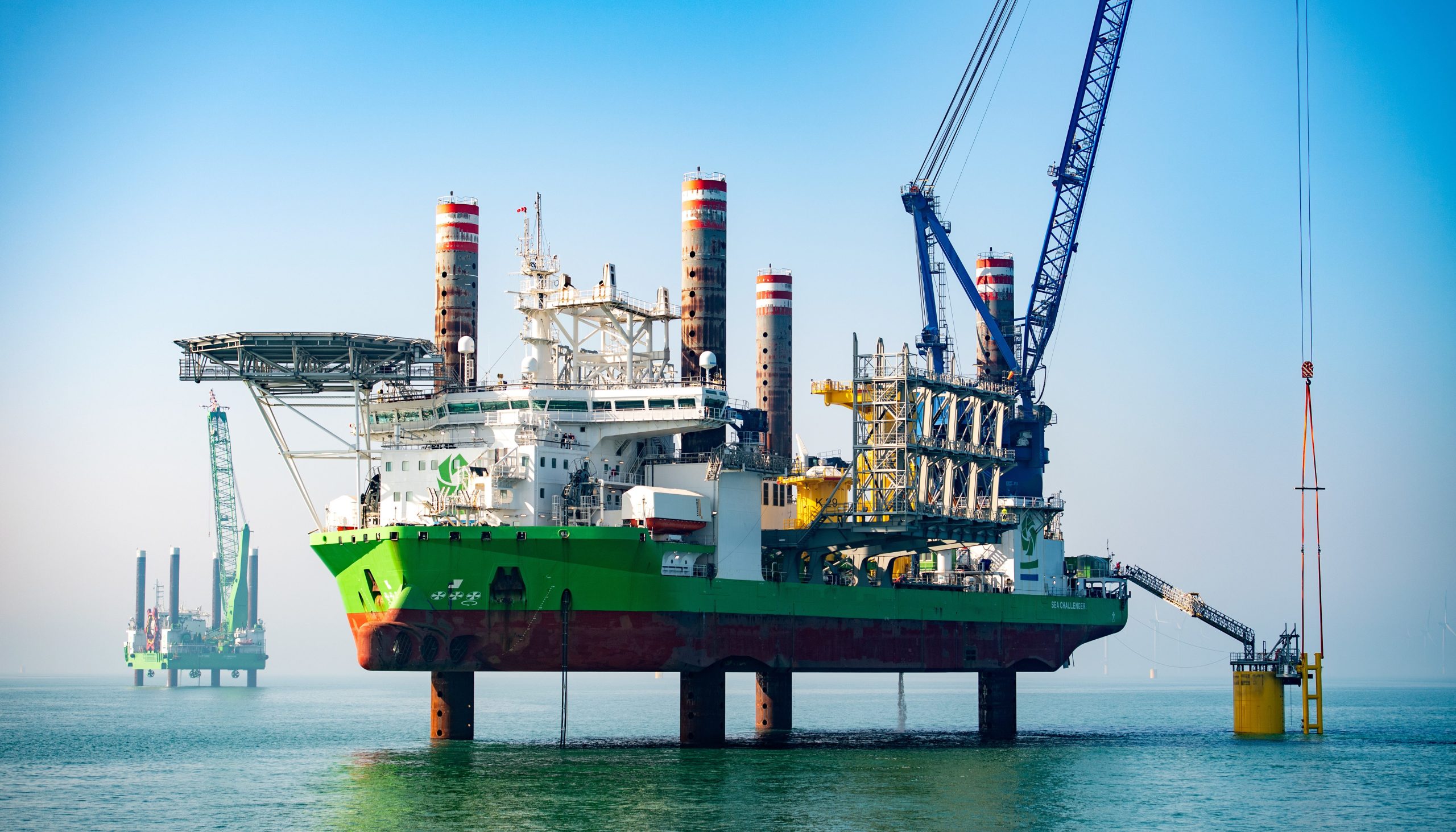Berlin, Bremerhaven, Frankfurt, Hamburg, 12 July 2022 – With the new expansion targets for offshore wind energy of at least 30 gigawatts (GW) by 2030, at least 40 GW by 2035 and at least 70 GW by 2045, Germany finally has the ambition the industry needs to accelerate expansion. Construction activity is also finally picking up this year. While no offshore wind turbines were built in the first half of 2021, there was initial construction activity in the Kaskasi and Arcadis Ost 1 offshore wind projects. Continuous, annual additions will be crucial in future to supply Germany with turbines and equipment in competition with other markets. However, the framework for future offshore expansion just established with the Wind Energy at Sea Act (WindSeeG) poses challenges for the industry.
“A central weakness of the amended Wind-on-Sea Act is the new tender design, which puts the price for the expansion of areas in the North and Baltic Seas first and foremost,” comment the industry organisations BWE, BWO, Stiftung OFFSHORE-WINDENERGIE, VDMA Power Systems and WAB. “Due to the freeze on expansion in recent years, Germany has fallen behind in international comparison. This makes it all the more important to have a functioning system that removes obstacles in the international competition for resources, skilled workers and investors.” In future, project developers will first have to put money on the table – similar to the auctions of mobile phone licences – in order to build an offshore wind energy project at all. Instead of being awarded according to the lowest costs, the bidder who pays the highest price for the rights to use the area will be awarded the contract.
By up to €21/MWh, industrial electricity prices could rise as a result of the newly enshrined bidding component, according to NERA Economic Consulting. “Cost pressure on the value chain, which is already weakened by the lack of expansion, will also increase – depending on the orientation of the project developers,” criticise the industry organisations. “The federal government and the offshore wind industry cannot afford fundamental mistakes in the tender design if the first stage target for 2030 is to be achieved. The bidding component must therefore be abolished as soon as possible or capped as in the Netherlands. Sustainability criteria, such as the integration of offshore-produced energy into our electricity grid, practicable and thus realisable decarbonisation contributions from planned offshore wind energy projects, the economic production of green hydrogen and the strengthening of the European industry should be in the foreground. They should be consulted with the wind energy industry and, if possible, introduced in a standardised manner across Europe in order to avoid unnecessary costs. The criteria now introduced must be adapted pragmatically and purposefully in cooperation with the industry in order to have their intended effect. Here we see an urgent need for correction in the current WindSeeG.”
The industry organisations take a positive view of the ramp-up of hydrogen production by offshore wind as stipulated in the new WindSeeG through six annual tenders of 500 megawatts (MW) of installed capacity from 2023. However, the industry expects to be closely involved at an early stage in the development of the tender design this time.
In order for the medium- and long-term goals to be realised, further measures must now be taken urgently. “2030 is virtually today,” the industry organisations warn. Offshore projects have long lead times. The de facto standstill of the last few years has left deep scars in the supply chain, as has the Corona pandemic. Now the demand for production capacities at home and abroad is increasing significantly. A special industrial policy effort with fair international competition is necessary. The production facilities of manufacturers and suppliers must be expanded in Europe and functioning supply chains must be guaranteed. The upgrading of shipyards and ports as well as specialised shipbuilding is essential and must be supported politically.
“It also needs a major training and qualification offensive supported by the German government. In the last three years, more than 3,000 jobs have been lost in the German offshore wind industry. Consequently, the industry has a high demand for well-trained skilled workers – a lot of good personnel has migrated abroad as a result of the failure to expand. The task now is to meet this demand by recruiting skilled personnel in a targeted manner. Concrete ideas, such as training clusters for wind energy, can help to meet the necessary demand for skilled workers. The training criterion now adopted in the WindSeeG is in itself an interesting approach to promoting training, but is likely to be very complex in its application for selecting the successful bidder,” the industry organisations conclude.






























